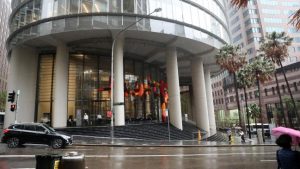What will the world look like after COVID-19?

It is something every senior management team and board will have been engaged with over recent years: disaster planning.
What happens when (not if) an extreme weather event wipes out a critical supply line? What happens if there’s a power outage? What happens if there’s a terrorist incident in or affecting one of our properties? Or, more likely, what happens if we get caught up in a frenzied social media attack?
I do not believe that any Australian business, and possibly even the government, will have contemplated the scenario that has befallen the people and economy during March 2020 — that a single novel virus would spread from a base in China throughout the world, infecting and killing thousands, wreaking havoc and spreading misery in its path, and forcing the simultaneous shutdown of the world’s largest economies in a single month.
Prior to March this would have been a heroic (meaning incredulous) scenario to have contended at an off-site retreat designed to address, among other things, the dot-point of “disaster planning”. Far safer to run with “cyclonic event” or “terrorist attack”, both of which would not have addressed anything even remotely close to the scale of what has actually happened.
Despite all the conferences and the strategic thinking that has engaged the corporate world over recent years, no one seriously considered the scenario we are now facing including, I think, the Australian government. As a consequence, there is no generally agreed “best way” of shutting down an economy and of communicating this stepped process to the people.
And this is partly because it never occurred to us that this might be necessary despite the time and effort put into disaster planning. It’s just that the disasters we’ve been planning for (for example climate, terrorist attack) didn’t produce a playbook that covered the complete shutdown of the global economy.
And yet to be fair the signs of an impending global pandemic were there, starting with avian flu in 1997, then SARS in 2003, then N1H1 in 2009, then MERS in 2012, then Ebola in 2013 and now the coronavirus from 2019.
Humanity has always had to deal with new infections, including the bubonic plague during the Middle Ages.
The difference today is that our world is global, enabling infections to spread easily and quickly. And no doubt there will be other global infections in the future. Plus, there is the added complication that a global pandemic (in the West at least) is played out in real time and in the public domain. At no time in history has human life been singularly engaged by a simultaneous mortal threat.
The bubonic plague may have claimed a greater proportion of humanity, but its spread was restricted by the prevailing limitations on travel.

And even during, say, WWII, humanity wasn’t united behind a single common threat. The developed world was divided and rallied behind opposing sides.
The fact is that we the people of the 21st century are dealing with something that is literally unprecedented in human history.
It is in one sense a galvanising experience to know that every person in every country at this moment knows of, and is frightened by, the coronavirus. I think this means that the post-pandemic world will be similarly galvanised into taking preventive action.
Plus, who would have thought that the collective “goldilocks generations” (baby-boomers, generation Xers, millennials and others), those who benefited mightily from the 75 years of peace and prosperity following WWII, would be tested by an adversity heaped upon them within a single terrifying month? That experience alone will prompt an unusually united “never again” demand from government and business.
We will, of course, recover from the coronavirus, but we will be changed, and the economy will be changed, by the experience. We have been planning for the wrong disasters, or at least the disasters that we have been planning for are far less of an immediate threat to life and business viability.
If nothing else comes out of the many inquiries and talkfests that follow the pandemic, let it be a refinement of the disaster planning process by business and government. There is an excuse for mishandling and even for mismanagement during an unprecedented disaster. There is no excuse for not learning the lessons, developing the strategies and adjusting the supply chains to better position the people, the nation and business for the future.
Every business, including and perhaps especially those in property, needs a post-pandemic strategic plan that should complement (as opposed to replace) its climate strategy.
Supply chains need to be diversified and the Australian government, and people, must be prepared to support the cost premium associated with local production. Australia’s critical infrastructure and work groups need to be reviewed and should now include supermarkets, pharmacies, warehouses and transportation systems, as well as the usual medical and hospital facilities.
Businesses that have transitioned to an agile (as opposed to cubicle) format need to extend their concept of agility to include working from home. This will involve upgrades to IT systems and perhaps even to HR policies. Perhaps business could institute a work-from-home month so as to practice agility, to test IT systems, to assure the ongoing viability of a business in a pandemic or some other disaster.
There needs to be a review of national stockpiles of critical equipment, including face masks and possibly also of transport-related necessities such as oil supplies. How long could Australia operate without an inflow-outflow trade affected by pandemic or blockade? Businesses need to be identified that have the capability of manufacturing complex equipment such as ventilators. British vacuum manufacturer Dyson is now making ventilators. Australia’s depleted textiles manufacturing capability needs to be reviewed.
This does not signal the end of the just-in-time supply-chain manufacturing system, but rather the start of the cautionary building-in of reserves, stockpiles, alternative applications to protect a business from failing in the advent of global pandemic.
Such a system would also have the capability of protecting the supply chain from a climate-induced or terrorist-caused calamity. The post-pandemic strategic plan should in fact complement existing climate strategies.
Australian breweries and distilleries have morphed, within a few weeks, into the production of hand sanitiser.
By the time the next global pandemic hits, say later in the 2020s or in the early 2030s, the corporate memory of how the coronavirus disaster was managed will have been lost.
The learnings need to be captured now and crystallised into a playbook to help successor CEOs and their senior management teams better manage the next global pandemic. And this is because it is the threat of global pandemic (and not the possibility of all-out nuclear war) that is now the greatest challenge to business and human survival in the 21st century.
The greater threat, the more visceral menace, is the very real possibility of a global pandemic that can eviscerate a business, its workforce and its profitability within a single month.
Bernard Salt is managing director of The Demographics Group.
This article originally appeared on www.theaustralian.com.au/property.







